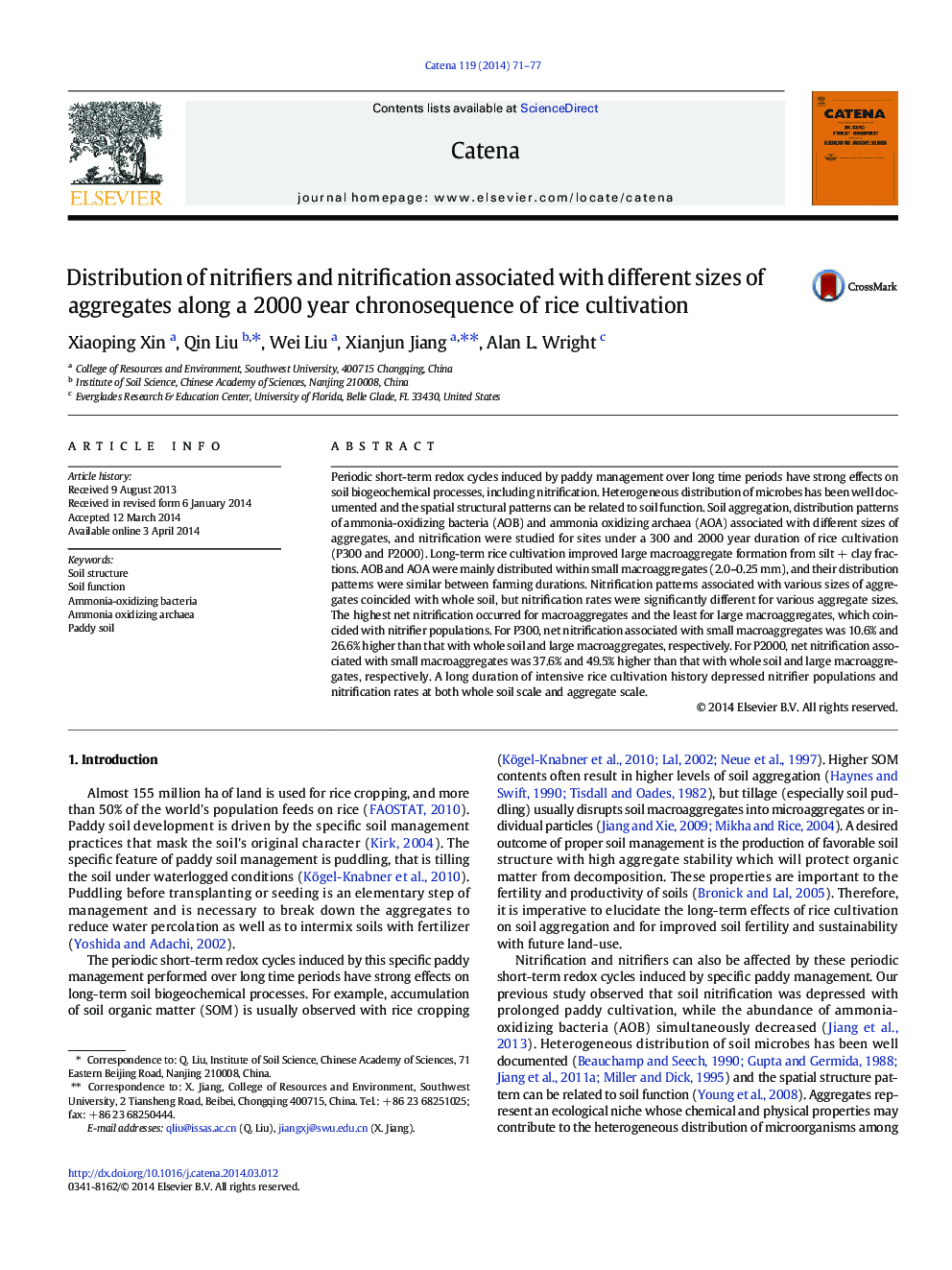| کد مقاله | کد نشریه | سال انتشار | مقاله انگلیسی | نسخه تمام متن |
|---|---|---|---|---|
| 4571448 | 1629233 | 2014 | 7 صفحه PDF | دانلود رایگان |

• Rice cultivation history improved large-aggregate formation.
• Nitrifiers were found to be mainly associated with macroaggregates.
• Highest net nitrification was observed for macroaggregates.
Periodic short-term redox cycles induced by paddy management over long time periods have strong effects on soil biogeochemical processes, including nitrification. Heterogeneous distribution of microbes has been well documented and the spatial structural patterns can be related to soil function. Soil aggregation, distribution patterns of ammonia-oxidizing bacteria (AOB) and ammonia oxidizing archaea (AOA) associated with different sizes of aggregates, and nitrification were studied for sites under a 300 and 2000 year duration of rice cultivation (P300 and P2000). Long-term rice cultivation improved large macroaggregate formation from silt + clay fractions. AOB and AOA were mainly distributed within small macroaggregates (2.0–0.25 mm), and their distribution patterns were similar between farming durations. Nitrification patterns associated with various sizes of aggregates coincided with whole soil, but nitrification rates were significantly different for various aggregate sizes. The highest net nitrification occurred for macroaggregates and the least for large macroaggregates, which coincided with nitrifier populations. For P300, net nitrification associated with small macroaggregates was 10.6% and 26.6% higher than that with whole soil and large macroaggregates, respectively. For P2000, net nitrification associated with small macroaggregates was 37.6% and 49.5% higher than that with whole soil and large macroaggregates, respectively. A long duration of intensive rice cultivation history depressed nitrifier populations and nitrification rates at both whole soil scale and aggregate scale.
Journal: CATENA - Volume 119, August 2014, Pages 71–77